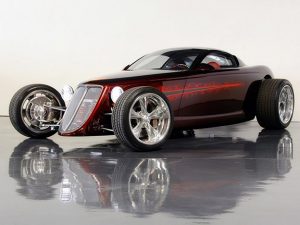3 Best Practices To Manage Used Vehicles As Investments
I’ve long advocated that dealers manage their used vehicles as investments—that their No. 1 goal should be to maximize their return on investment (ROI) within the shortest amount of time and the least amount of risk.
 This investment-driven retailing strategy is harder for some dealers to accept (and in some cases, acknowledge) than others. The reason: Dealers are not accustomed to managing their used vehicle inventories with the degree of discipline and rationality that true-blue investment managers would apply to their client portfolios.
This investment-driven retailing strategy is harder for some dealers to accept (and in some cases, acknowledge) than others. The reason: Dealers are not accustomed to managing their used vehicle inventories with the degree of discipline and rationality that true-blue investment managers would apply to their client portfolios.
There are two clear examples where dealers seem to lose their investment perspective, and chase speculative hunches:
1. “Cars are cheap now, so I’ll stock up.” This often happens in the spring and early summer. And, just as often, this speculative move leads to aged cars and less-then-desired gross profits.
2. “I can’t replace the car for what I’ve got into it. I’m better off holding on to it.” I hear this from dealers all the time—and mostly when they’re explaining why they’ve let a car age beyond its most profit-productive retail life.
Neither of these scenarios happens with regularity for dealers who manage their used vehicles as investments. If cars are cheap, their first reaction is, “how come?” followed by, “does the market suggest these cheaper cars make sense as an investment?”
Likewise, these dealers rarely “hold out” on an investment that’s lost its market appeal. These dealers are astute students of the market and they’ll proactively get out of a car before buyer demand and interest bottom out.
Here are three best practices dealers use to manage their used vehicles as investments:
1. Follow a firm 45-day investment time horizon. My financial advisor believes that retirement-oriented investments require at least a three-year minimum horizon; anything less, he believes, invites fear- or greed-driven speculation. In used vehicles, the opposite is true—a short-but-firm retail time horizon of 45 days is the maximum window today’s market allows for used vehicles. By definition, this investment time period focuses a dealer on the principal investment goal of maximizing ROI in the least amount of time, with the least amount of risk.
2. Maintain at least half your used vehicles below 30 days of age. This inventory age standard ensures dealers focus their attention on cars when they’re fresh and stand to deliver the best ROI and profitability potential. Here’s an exercise: Compare the gross profit of vehicles that sell in the first 30 days compared to those you retail in the last 15 days (assuming a 45-day horizon). For most dealers, the difference between the gross profit averages for fresh cars runs 5 percent to 10 percent higher than the average for older-age units. This difference is why investment-minded dealers seek to consistently capitalize on retailing fresh units fast rather than “holding out” for a gross profit that probably won’t materialize.
3. Align pricing to the market and each car’s ROI/profitability potential. Some dealers regard investment-minded used vehicle pricing too simplistically: It is not, nor has it ever been, about pricing vehicles below the market from day one to sell cars quickly and reinvest the proceeds in another unit. Such an approach would unnecessarily undermine the ROI and profitability potential in every car. By contrast, investment-minded dealers know if/when the market suggests a car merits go-for-gross pricing right away, and when it doesn’t. They also monitor the market to make precise pricing adjustments as a vehicle ages to balance a unit’s waning market appeal and its remaining ROI/profitability potential.
There’s no question these investment-focused best practices require a greater deal of pricing and process discipline than many dealers are accustomed to applying in their used vehicle operations. However, as my friend and used vehicle consultant Tommy Gibbs likes to say, “you can either suffer the pain of discipline or the pain of regret.”
